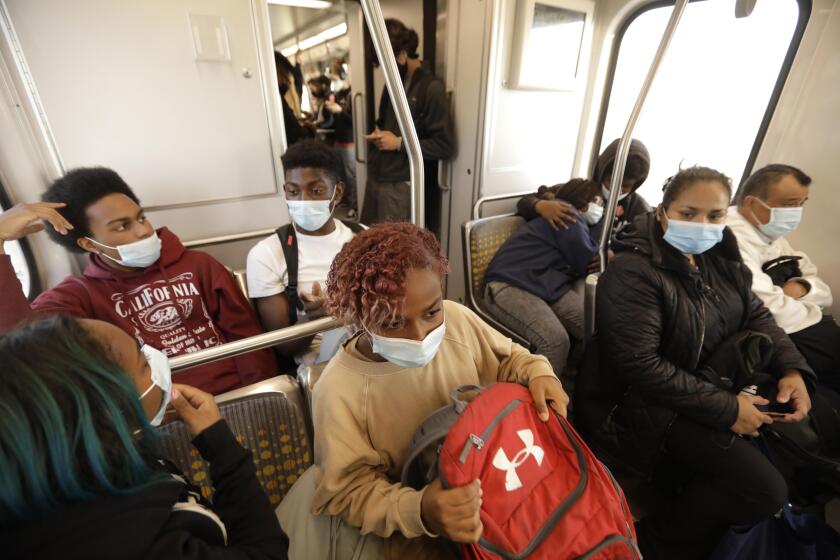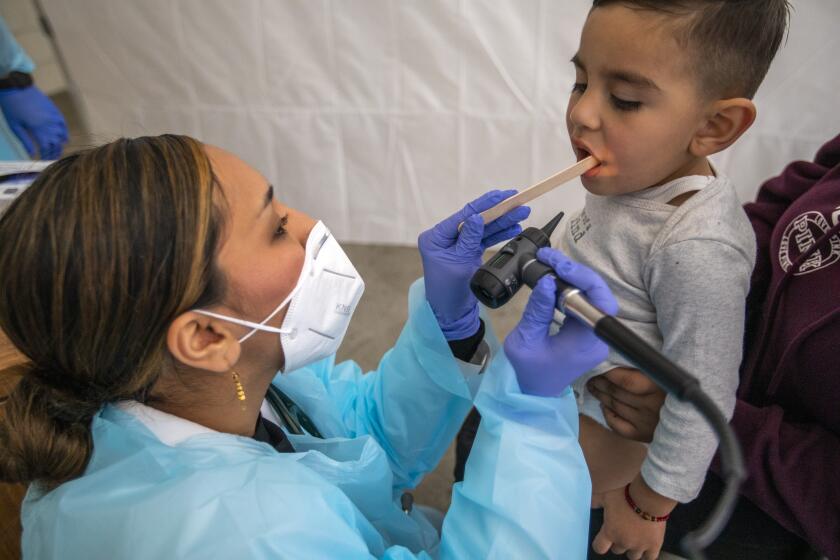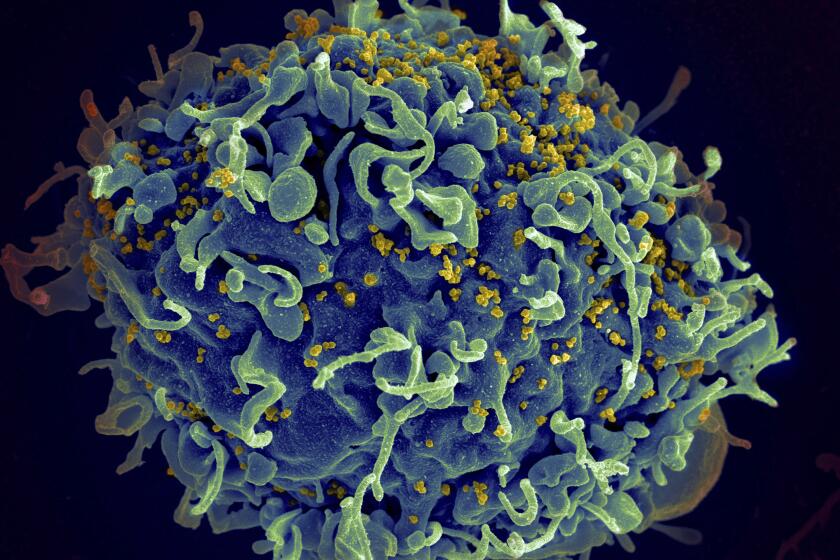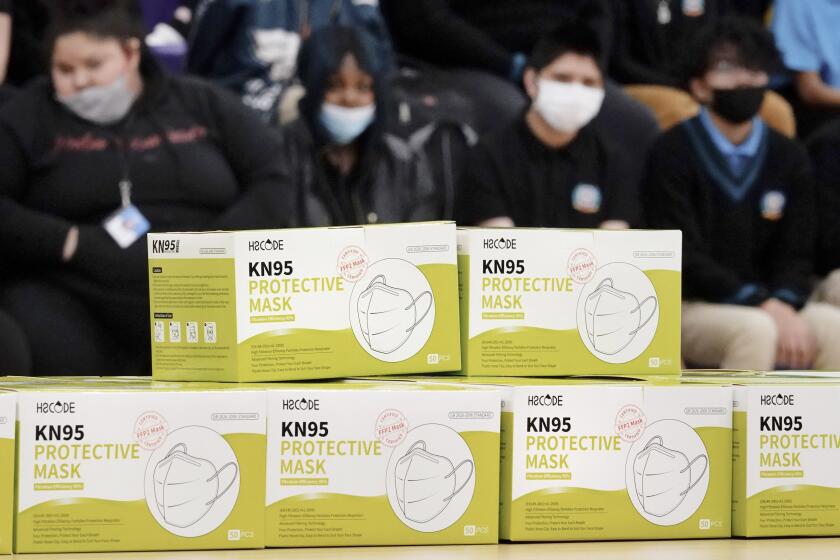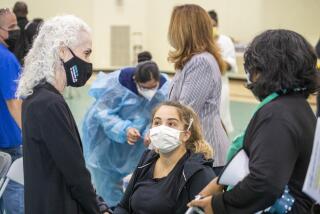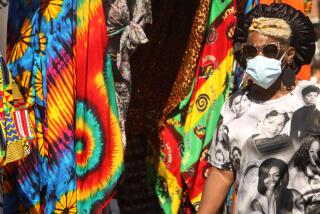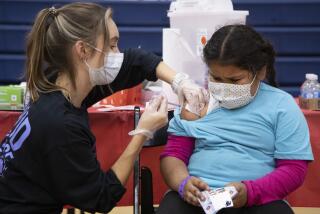L.A. schools chief pushes to delay student COVID vaccination mandate
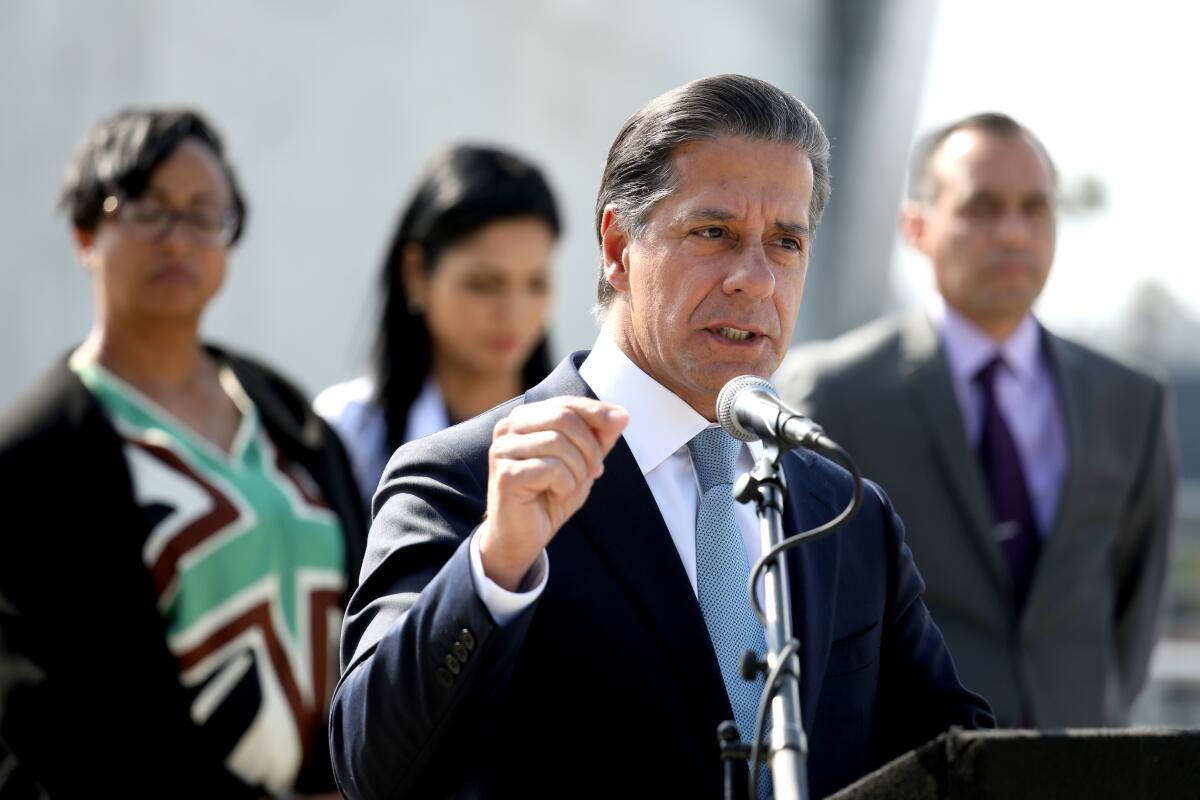
The Los Angeles Unified School District should delay its requirement that students be vaccinated against COVID-19 until next year, its superintendent recommended Thursday, given the system’s already high vaccination rates among older students as well as low transmission rates in schools.
Supt. Alberto M. Carvalho said that, after consulting with experts, he will ask the district’s board to hold off on enforcing the mandate until July 1, 2023, at the earliest. Doing so would align California’s largest school district with the expected timeline of a statewide student vaccination requirement.
At a news conference, Carvalho pointed to the high level of vaccinations among students 12 and older, the district’s employee vaccination mandate and aggressive COVID testing as protocols that set L.A. Unified up for this moment. He added that the district also needed to consider the consequences of not bringing forward the recommendation.
“We should be lifting — in a reasonable, respectful and intelligent way — the barriers that may exist, that are preventing, maybe, some students from coming to school,” Carvalho said. “There are many students, thousands of students, who are not making adequate progress because they’re being taught in a modality that does not necessarily match their needs. Those students absolutely need face-to-face instruction. If the scientific conditions are what they are, we ought to remove the barriers and invite them back to the schoolhouse.”
Carvalho said the school board is set to vote May 10. The district’s employee vaccine mandate will remain in place.
Hospitalizations have yet to follow the path of rising coronavirus cases in California, and in fact are at near-record lows.
L.A. Unified was the first of the nation’s large school systems to institute a COVID-19 vaccination requirement for students. However, the district opted in December to delay enforcing the rule until this fall — citing both an already high rate of compliance and the desire to prevent potentially massive disruptions for students.
The landscape shifted further when Gov. Gavin Newsom announced this month that California would not move ahead with its planned statewide requirement for schoolchildren to be immunized for COVID-19 before the next academic year. The California Department of Public Health has said the timeline will be pushed back to at least July 1, 2023.
That change threw the school district’s mandate into question, with at least one board member expressing interest in aligning with the state’s new timeline. At the time, Nick Melvoin called the state’s postponement a sign of good policymaking as districts attempt to navigate “the largest educational disruption in a century without a playbook.”
On Thursday, Melvoin said he continues to advocate for the district to align with public health guidance.
“We need to be able to adapt to the latest recommendations from county and state public health entities,” he said. “We also know that the district’s high vaccination rates played a crucial role in keeping kids in school throughout the year — and we will continue providing access and encouraging families to get vaccinated.”
School board President Kelly Gonez said she supported the move, a shift from her previous position.
“It was really the testimony of health experts,” Gonez said, who were “quite clear that the conditions are the safest that we have seen in a long time, and that the protocols that we have now are part of why it is so safe and what enabled us to make this shift.”
Still, some parents were not in favor of the proposed delay.
Monica Arrazola, a parent of three LAUSD students, said her youngest — a fifth-grader — did not go back to school until he was vaccinated.
“We’re still living through a pandemic, we all need to get vaccinated,” said Arrazola, whose children — ages 16, 14 and 11 — have all had their shots.
Other parents, such as Joe Mardesic, whose daughter is a sixth-grader, said the district shouldn’t have a role in their children’s inoculations at all.
“It’s great that they’re pushing it back, better if they stop and get out of it all together,” Mardesic said. “It’s none of their business.”
Gonez acknowledged that not everyone would agree with the proposal.
“I know that there are diverse opinions among families,” she said. “We will never satisfy everyone, but as a district, we have always been willing to make the hard calls in pursuit of student health and safety, and based on the recommendations of scientists — and that’s what we’re doing today.”
One study found that upper airway infections among hospitalized coronavirus-infected children nearly tripled.
Thursday’s announcement came a day after the L.A. County Department of Public Health released data showing that coronavirus cases among students and staff in the county’s schools have doubled during April — a trend officials say should reemphasize the importance of taking precautions, even as the overall number of campus-documented infections remains low.
For the school week prior to spring break — April 4-8 — 844 students and staff tested positive for the coronavirus countywide, according to data from the health department. But over the week that classes resumed, April 18-22, there were 1,842 positive test results.
However, many cases may have been discovered not necessarily because a student or staffer fell ill, but because Los Angeles Unified requires all pupils and personnel participating in in-person instruction to undergo weekly testing.
Countywide, 529,000 tests were administered for the week ending April 22, which adds up to a test positivity rate of 0.35%, health figures show. About 450,000 tests were given during the week ending April 8, resulting in a weekly test positivity rate of 0.19%.
In the first week of classroom instruction after spring break, there were 13 outbreaks at schools in L.A. County, with six of them in elementary schools, one in a middle school, two in high schools and four associated with youth sports.
That’s up from 11 outbreaks the week before spring break. Of those, seven were in elementary schools, one was in a middle school and three were in high schools.
Carvalho said the district was not considering returning to previous measures, such as a districtwide mask mandate, even after the current increase in cases.
“Despite that slight increase, well below any level of alarm, of the positivity rate, we still didn’t see an increase in transmission rate, which means schools are not the places where the virus is being transmitted,” he said.
L.A. County Public Health Director Barbara Ferrer said Thursday that she recognizes it’s “sensible for LAUSD to align with the timeline that the state has laid out.”
State health officials said they will implement the vaccination requirement in a phased approach following a Food and Drug Administration decision to fully approve the vaccination for younger ages. It’s not clear when that will happen.
Once the FDA acts to fully approve a COVID-19 vaccine for those age 12 to 15, the state would begin a rule-making process — including the chance for public comment — to require vaccinations as a condition of attending grades seven through 12 in public or private school. Currently, the Pfizer-BioNTech vaccine is available to children ages 5 to 15 under an emergency-use authorization, and has not been fully approved.
Climate change is likely to increase the risk of emerging infectious diseases jumping from animals to humans, according to a new study.
After the FDA acts to fully approve a COVID-19 vaccine for ages 5 to 11, the state would begin a similar process to require vaccinations for children in kindergarten through sixth grade.
“In general, I’m supportive of — when you have that full approval from the FDA — adding COVID vaccines to the long list of vaccinations that are required for students attending our schools,” Ferrer said during a briefing.
But, she added, while “were we back to sort of our pre-vaccine days … or we have what we had during Omicron — overwhelming numbers of people getting sick and requiring a lot of care — we might need to revisit what to do with our vaccination mandates,” she said.
Only 32% of children ages 5 to 11 have completed their primary vaccination series in L.A. County, compared to 78% of adolescents age 12 to 17, health data show.
Three out of every four U.S. children have been infected with the coronavirus, according to new estimates from the CDC.
COVID-19 vaccines are still unavailable for the youngest children. However, Moderna on Thursday submitted an application to the FDA to expand eligibility to those younger than 6.
Among people of all ages, L.A. County is averaging nearly 1,800 new coronavirus cases a day, or 122 cases a week for every 100,000 residents. A rate of 100 or more is considered high — the worst level in a four-tier scale defined by the U.S. Centers for Disease Control and Prevention.
Coronavirus-positive hospitalizations also began to rise this week, but overall remain at some of the lowest levels of the pandemic.
Scientists have said they would not be surprised if cases increase further in the summer; or in the late fall and early winter, as has happened each of the past two years.
Officials still urge those who have survived a coronavirus infection to get up to date on vaccinations and boosters, noting that natural immunity wanes over time and isn’t necessarily protective against a future variant.
“People with risk factors … are at increased risk for severe disease from reinfection,” CDC scientist Dr. Kristie Clarke said at a briefing Tuesday. “We encourage people to stay up to date completely on their vaccination, regardless of their history of infection.”
More to Read
Sign up for Essential California
The most important California stories and recommendations in your inbox every morning.
You may occasionally receive promotional content from the Los Angeles Times.
